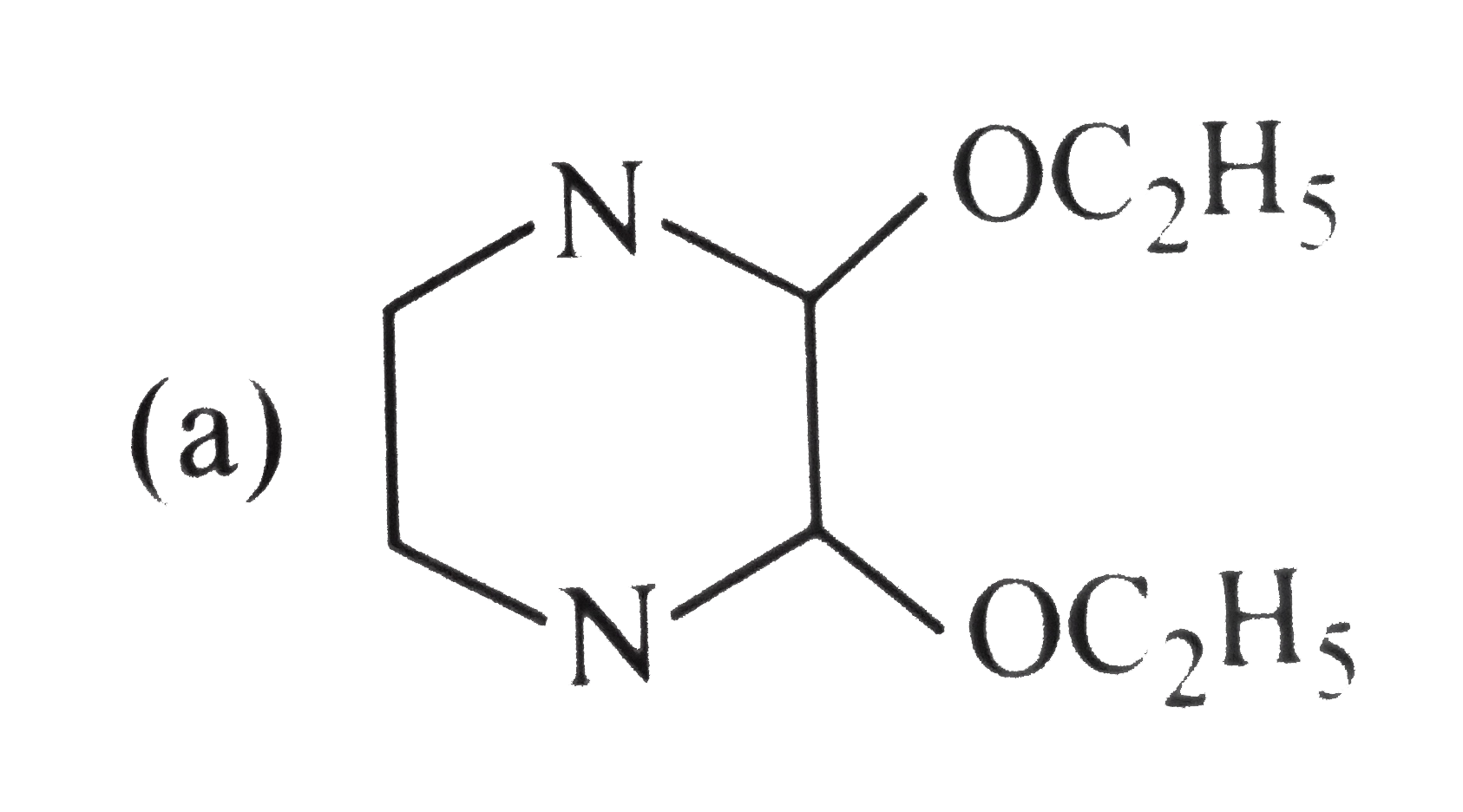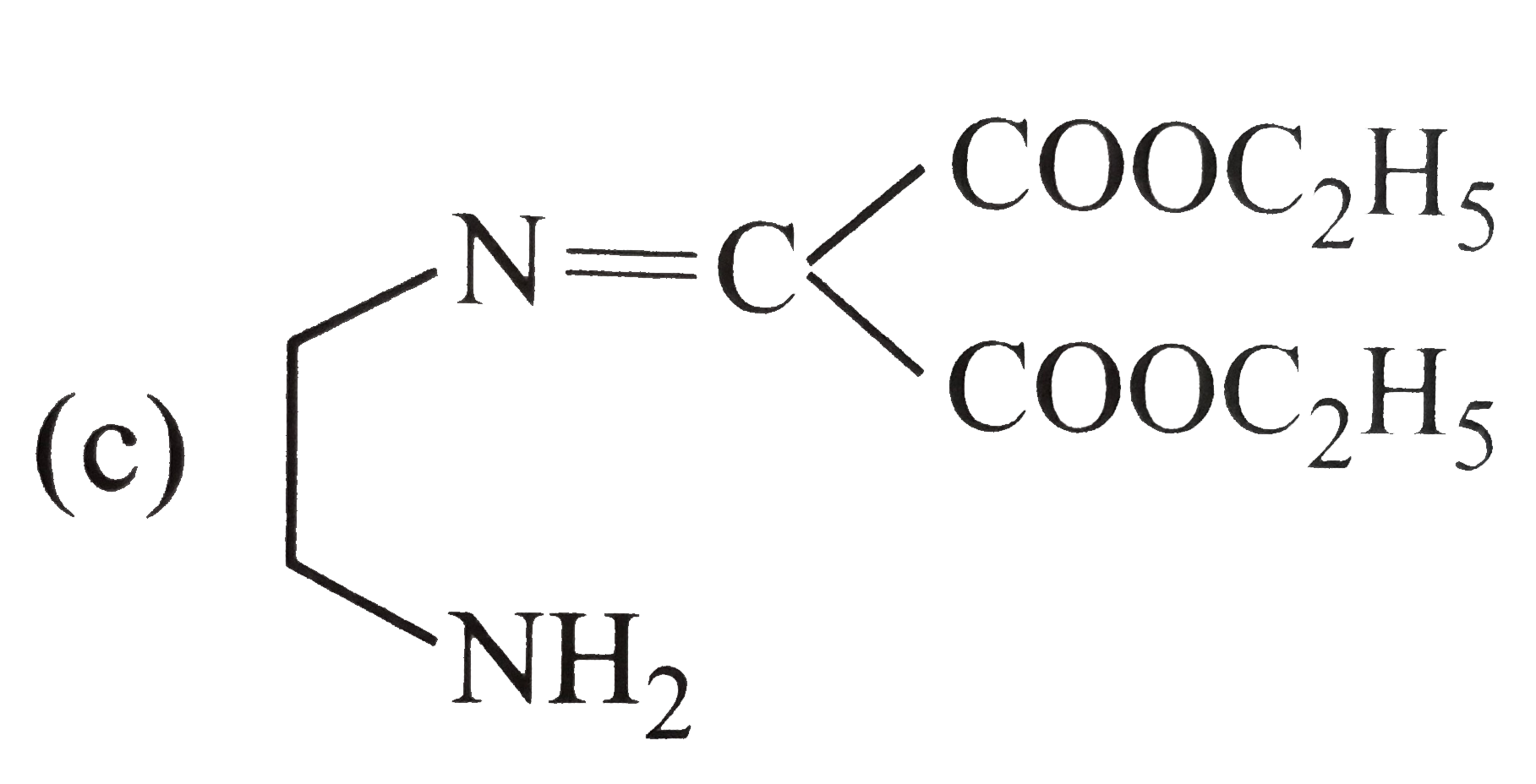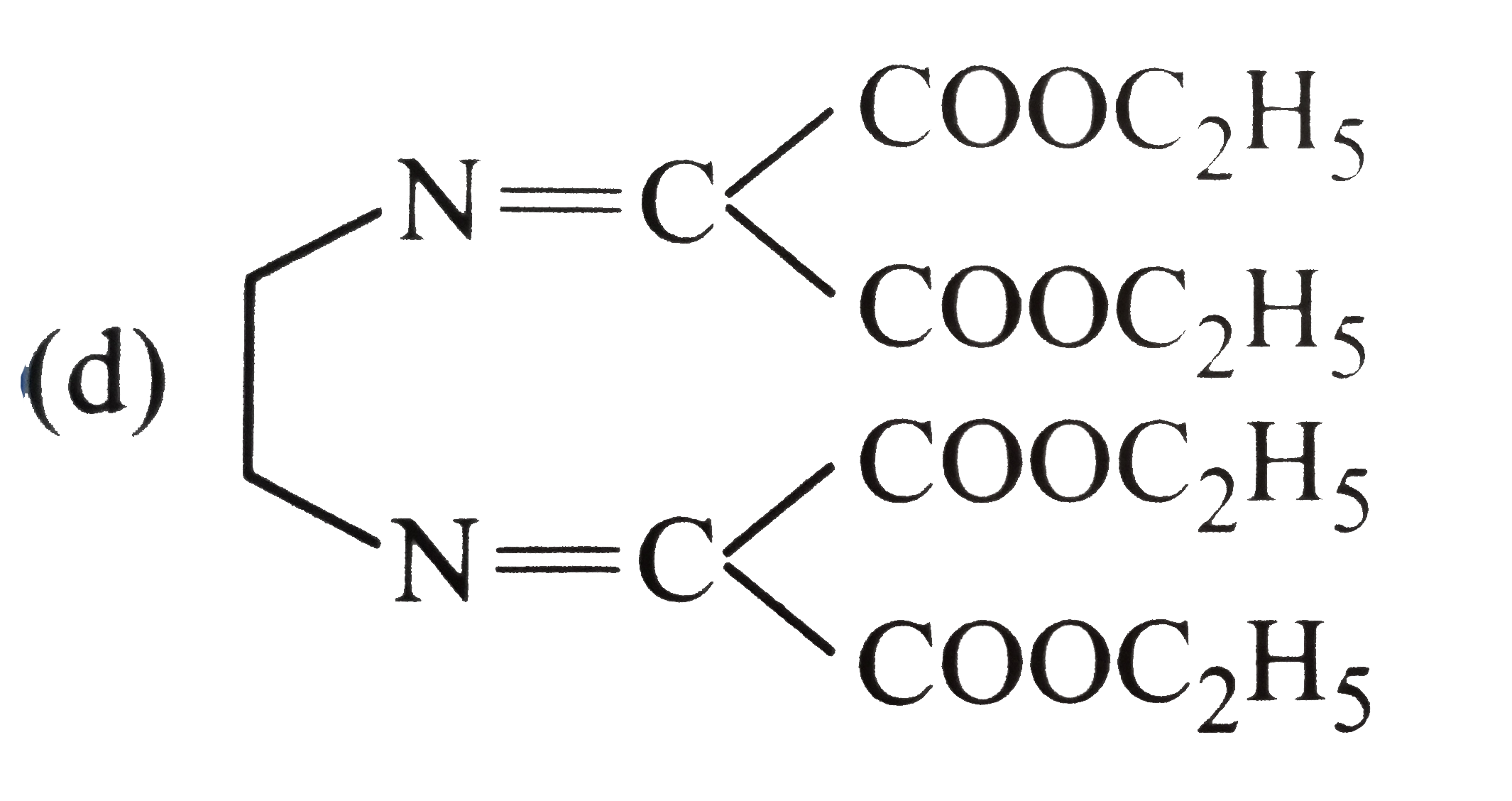H2N−CH2−CH2−NH2 when reacts with diethyl oxalate gives:




The correct Answer is:B
Topper's Solved these Questions
- CARBOXYLIC ACIDS AND THEIR DERIVATIVESBOOK - OP TANDONCHAPTER - CARBOXYLIC ACIDS AND THEIR DERIVATIVESEXERCISE - Integer
4 Videos
- CARBOXYLIC ACIDS AND THEIR DERIVATIVESBOOK - OP TANDONCHAPTER - CARBOXYLIC ACIDS AND THEIR DERIVATIVESEXERCISE - Brain storming problems
30 Videos
- BASIC PRINCIPLES OF ORGANIC COMPOUNDS (MECHANISM OF ORGANIC REACTIONS)BOOK - OP TANDONCHAPTER - BASIC PRINCIPLES OF ORGANIC COMPOUNDS (MECHANISM OF ORGANIC REACTIONS)EXERCISE - SINGLE INTEGER ANSWER TYPE QUESTIONS
4 Videos
- CHEMICAL KINETICSBOOK - OP TANDONCHAPTER - CHEMICAL KINETICSEXERCISE - LINKED COMPRESHENSION TYPE QUESTIONS ( SECTION-VI)
4 Videos
Similar Questions
The ions or molecules bound to the central atom/ion in the coordination entity are called ligands. These may be simple ions such as Cl−, small molecules such as H2O or NH3, larger molecules such as H2NCH2CH2NH2 or N(CH2CH2NH2)3 or even macromolecules, such as proteins.
When a ligand is bound to a metal ion through a single donor atom, as with Cl−,H2O or NH3, the ligand is said to be unidentate. When a ligand can bind through two donor atoms as in H2NCH2CH2NH2 (ethane-1, 2-diamine) or C2O2−4 (oxalate), the ligand is said to be didentate and when several donor atoms are present in single ligand as in N(CH2CH2NH2)3, the ligand is said to be polydentate Ethylenediamineteraacetate ion [EDTA4−] is an important hexadentate ligand. It can bind through two nitrogen and four oxygen atoms to a central metal ion.
What is meant by didentate ligand ? Give an example other than ethane-1,2-diamine.
View SolutionThe ions or molecules bound to the central atom/ion in the coordination entity are called ligands. These may be simple ions such as Cl−, small molecules such as H2O or NH3, larger molecules such as H2NCH2CH2NH2 or N(CH2CH2NH2)3 or even macromolecules, such as proteins.
When a ligand is bound to a metal ion through a single donor atom, as with Cl−,H2O or NH3, the ligand is said to be unidentate. When a ligand can bind through two donor atoms as in H2NCH2CH2NH2 (ethane-1, 2-diamine) or C2O2−4 (oxalate), the ligand is said to be didentate and when several donor atoms are present in single ligand as in N(CH2CH2NH2)3, the ligand is said to be polydentate Ethylenediamineteraacetate ion [EDTA4−] is an important hexadentate ligand. It can bind through two nitrogen and four oxygen atoms to a central metal ion.
What type of ligands are H2O and NH3 ?
View Solution
Knowledge Check
H2N−CH2−CH2−NH2 serves as
AMonodentate ligandBChelating ligandCAnionic ligandDCationic ligandIUPAC name of C6H5−CH2−CH2−NH2
A2-phenyl ethanamideB2-phenyl ethanamineC2-phenyl ethylamineD3-phenyl ehtanamineThe ligand N(CH2CH2NH2)3 is
ATridenatateBPentadentateCTetradentateDBidenatate
What is the product when C6H5CH2NH2 reacts with HNO3?
View SolutionThe ligand N(CH2CH2NH2)3 is
View SolutionThe ligand N(CH2CH2NH2)3 is
View SolutionThe ligand N(CH2CH2NH2)3 is
View SolutionAmong the following
I. CH3NH2
II. (CH3)2NH
III. (CH3)3N
IV. C6H5NH2
Which will give the positive carbylamine test?
View Solution

